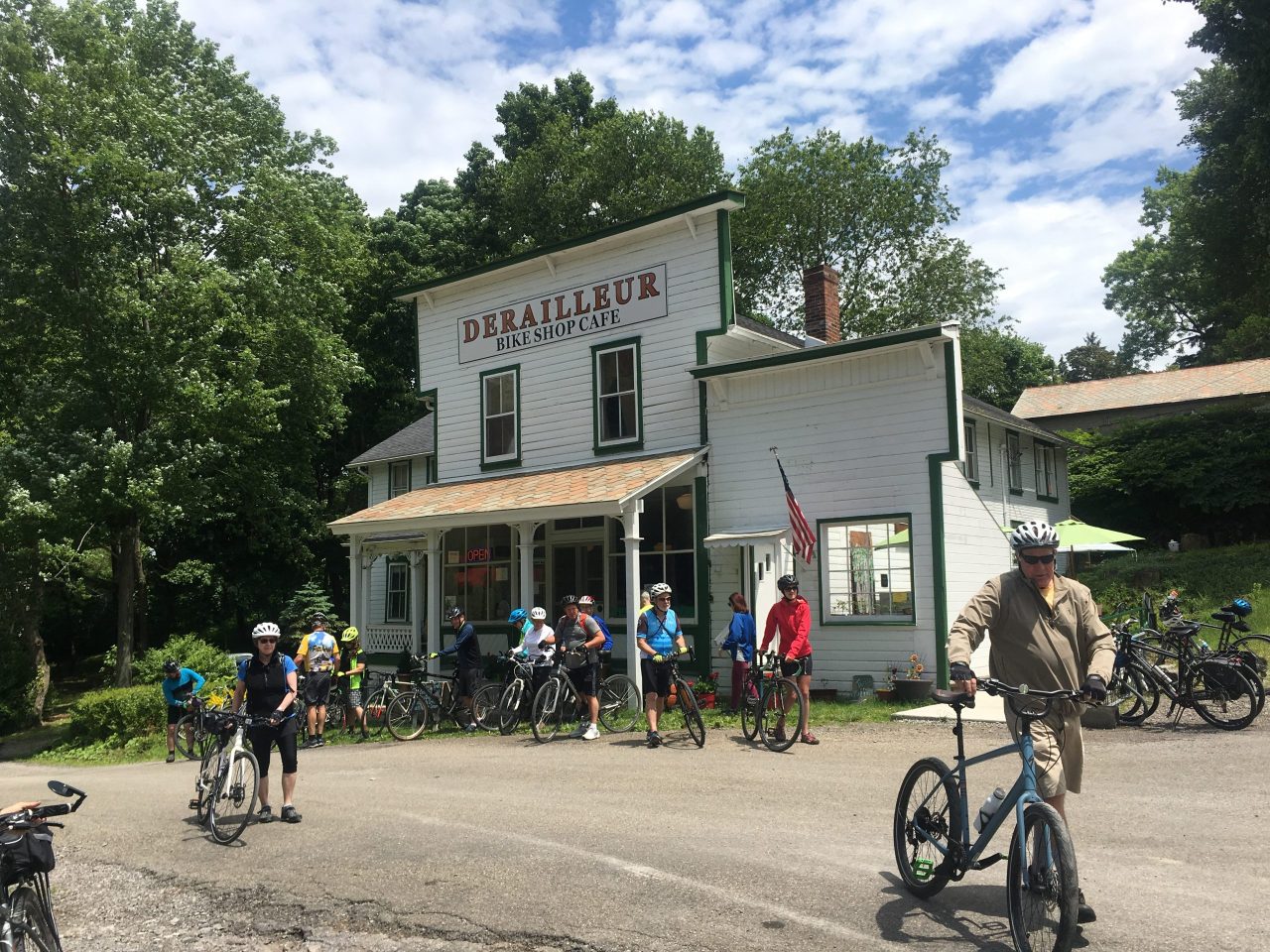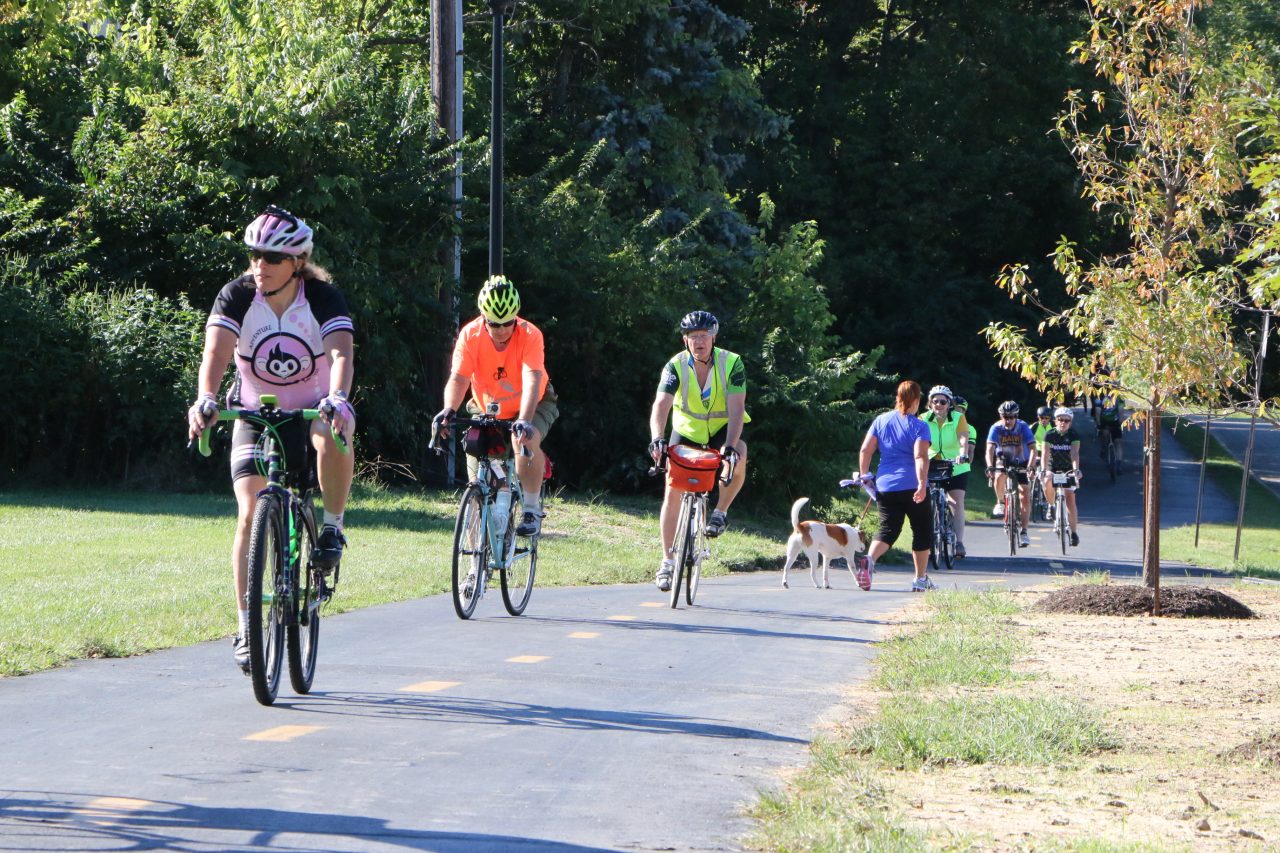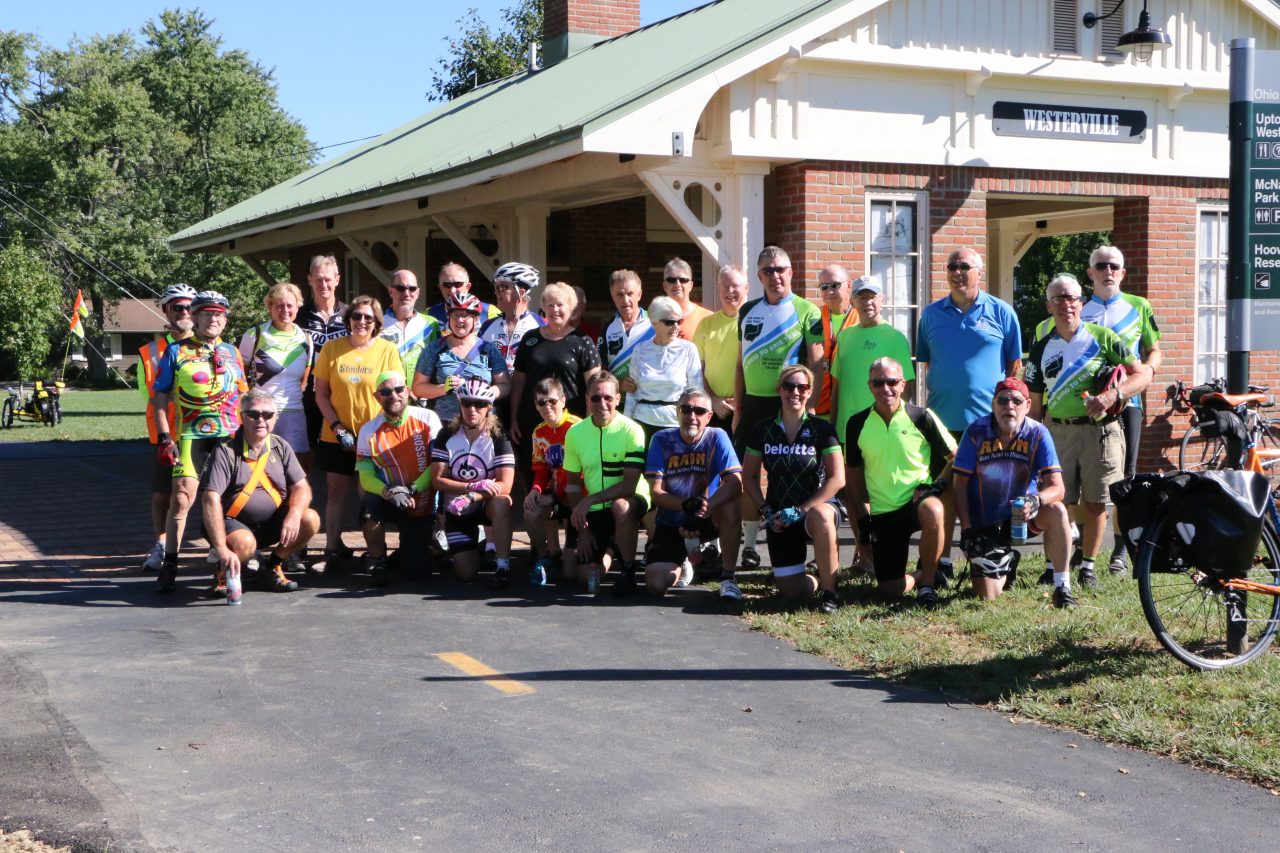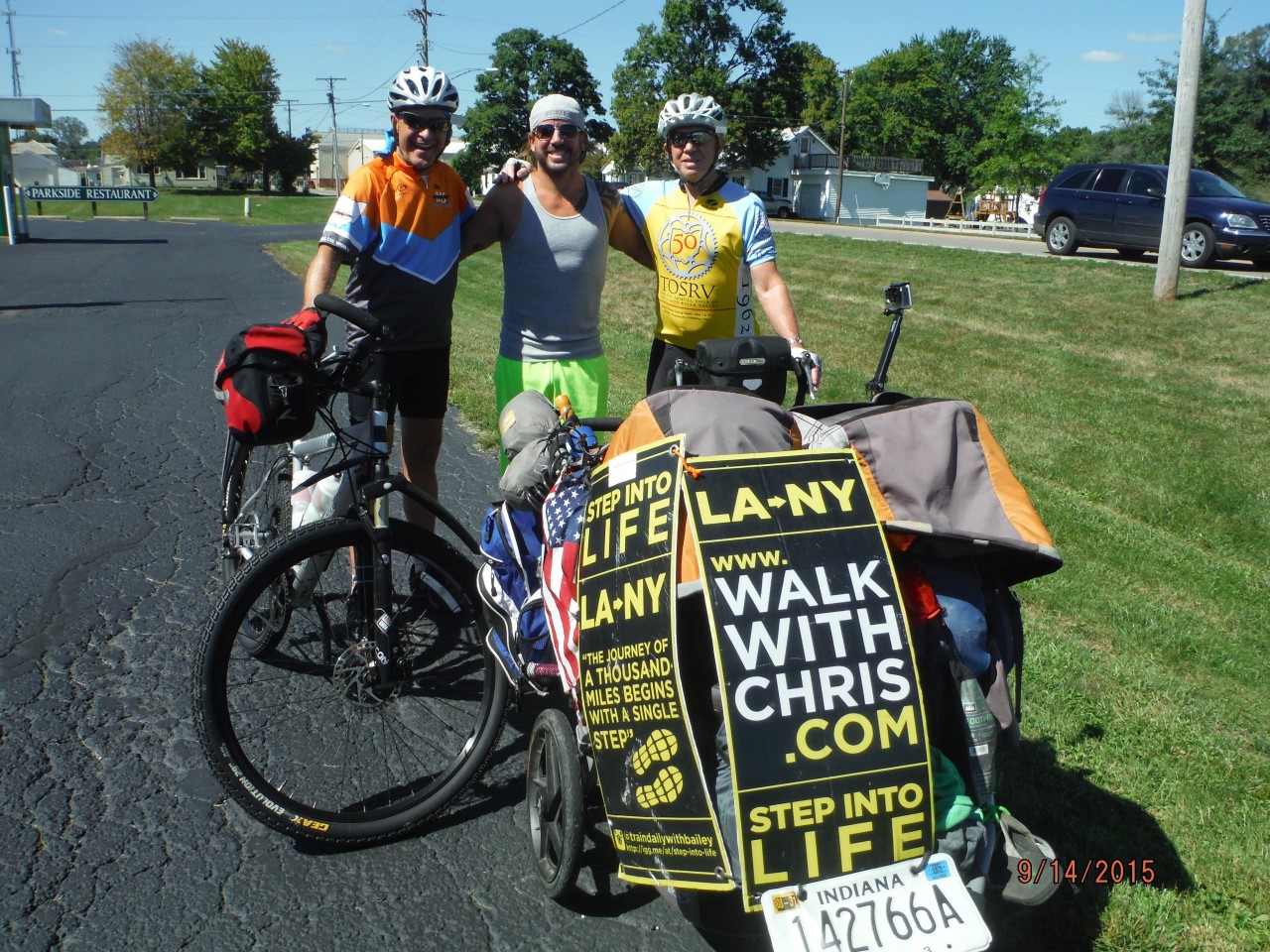Posted 12/3/2021
The initial phase of a trail town initiative has been funded through a Green Funds grant through the Columbus Foundation. The recipient is the Mid-Ohio Regional Planning Commission (MORPC) who is partnering with the Ohio to Erie Trail, Rails To Trails Conservancy, and many other partners in their region.
This initiative will establish a Central Ohio region wide trail town implementation strategy, with a goal of informing a larger statewide trail town program.

The first goal is to create a trail town guidebook that will primarily serve as an implementation blueprint and includes best practices and other shareable documents for anyone, both within MORPC’s region and beyond to use as they set their sights on becoming a trail town. In addition, the first phase will provide specific, easy to implement trail town infrastructure recommendations to 4-6 communities along the Ohio to Erie
Trail.
What is a trail town?
Good examples of trail towns can be found along Pennsylvania’s GAP (Great Allegheny Pass) Trail and along the Buckeye Trail, a 1,444 mile hiking trail loop in Ohio. Trail towns welcome travelers in many ways, including having easy to access amenities such as restrooms, food, lodging, secure parking for bikes, and helpful signage.
What does it take to be a trail town?
The criteria varies, depending on where you are. This initiative will be looking at models that currently exist, especially the trail towns of the Buckeye Trail and GAP Trail.
Why do we need trail towns?
Travelers recognize trail towns as places they can find everything they may need to support themselves. By having established trail towns, visitor numbers will go up, and benefits of trail tourism will help support economic vitality within the small towns. Trail towns not only encourage tourism, but they provide important quality of life amenities to residents already living nearby including walkable town centers.
How soon before a trail town is established along the Ohio to Erie Trail?
The initial phase of creating a community guidebook is scheduled to take about a year. After the initial phase, it may be a few years before communities can secure funding to add what amenities are necessary. The good news is that many towns are off to a good start and have some of the amenities that will qualify them as a trail town so the time frame could be a lot less. There are even some communities along the OTET that already draw tourists and cyclists from across the country and have established themselves as trail friendly places.






